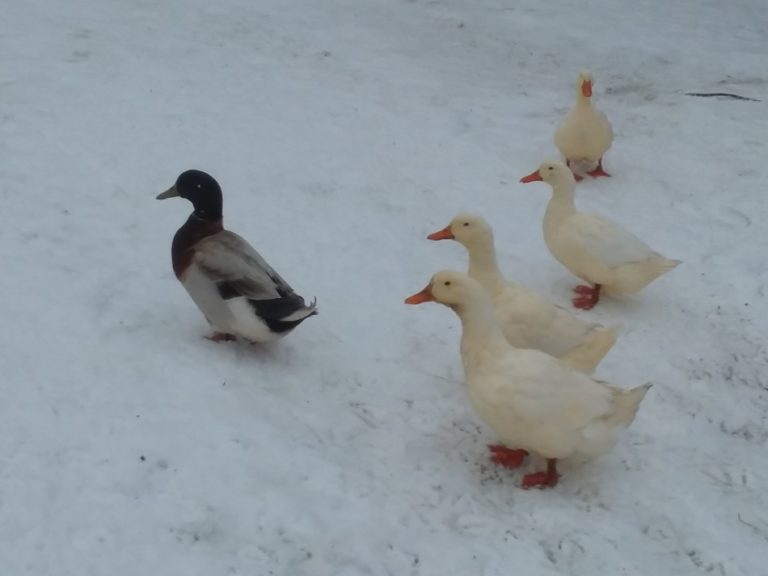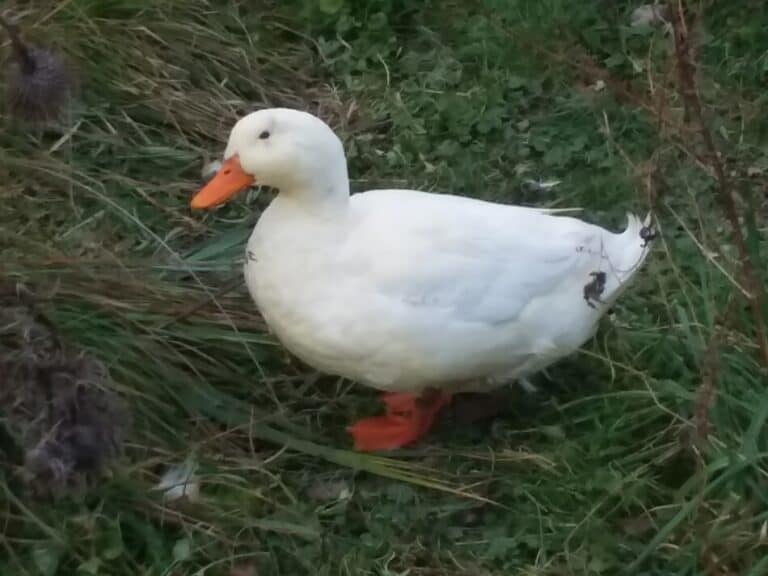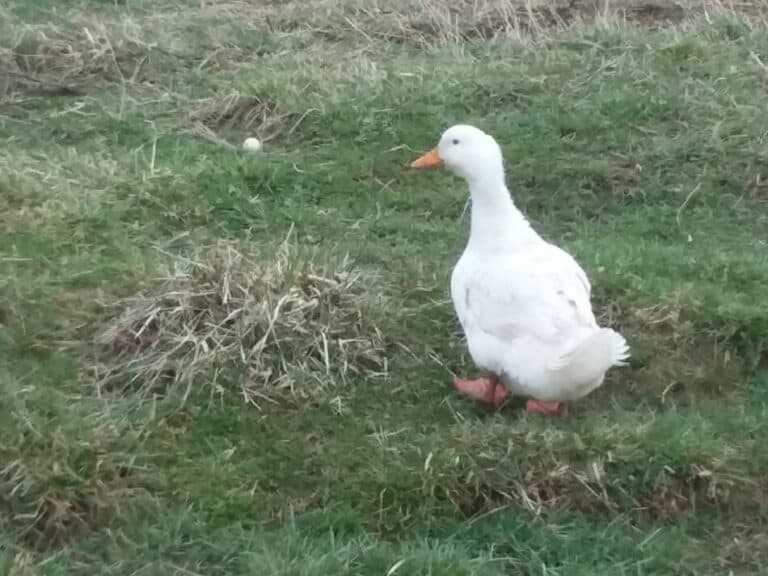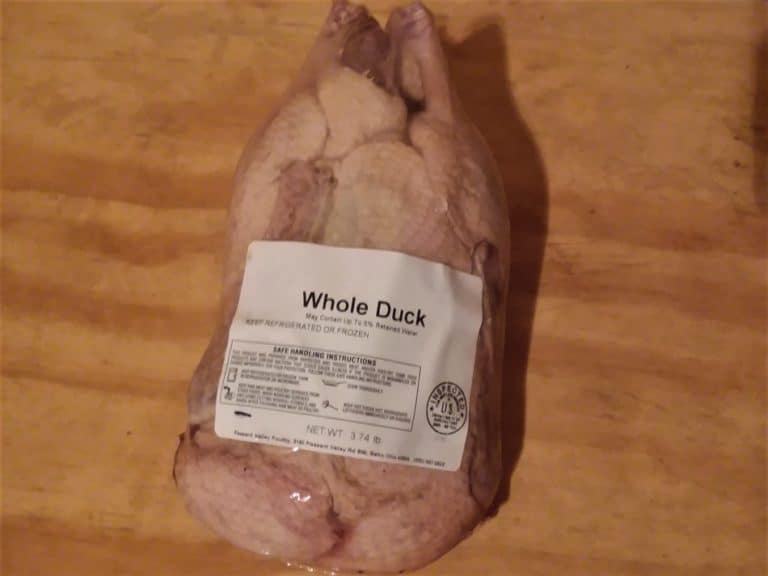16 Duck Breeds For Eggs and Meat
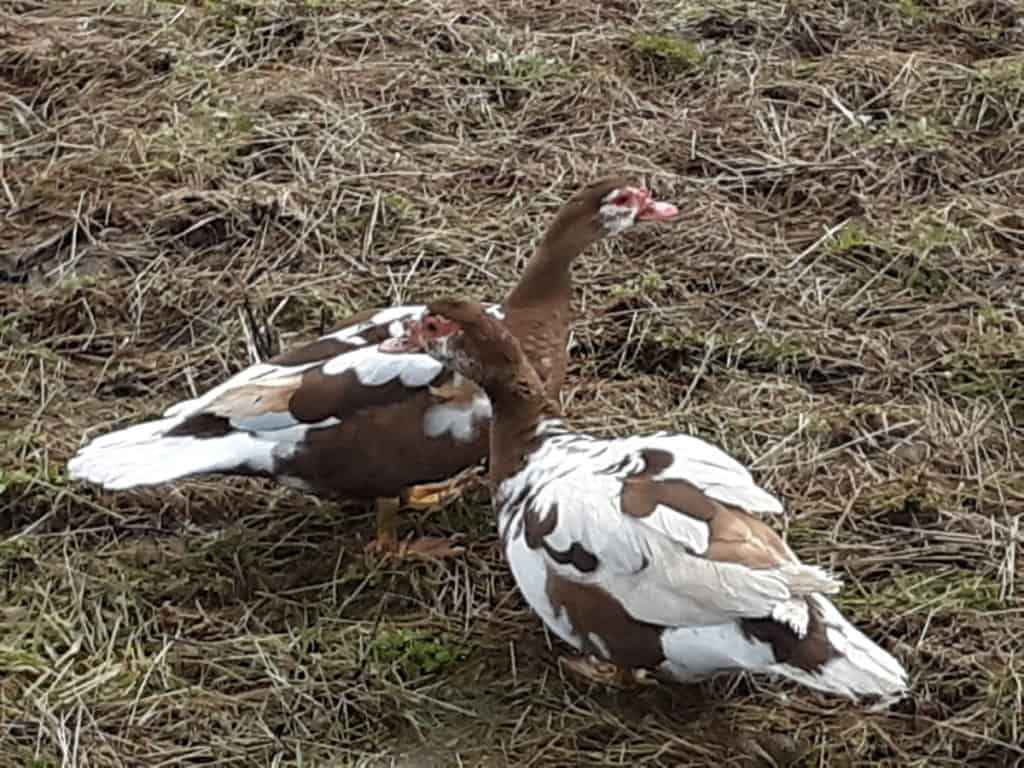
Will ducks take over as the classic backyard bird?
Ducks have a lot to offer the small scale producer wanting to raise meat and eggs and, in some instances, will perform better than a chicken!
Ducks can be raised for eggs, meat or both. Choose the breed based on your primary purpose for raising the ducks.
| Duck Breed | Primary Use | Availability |
| Ancona | Dual Purpose | Some Hatcheries |
| Aylesbury | Meat | Low Availability |
| Buff | Dual Purpose | Most Hatcheries |
| Cayuga | Dual Purpose | Most Hatcheries |
| Hybrid Egg Layer | Eggs | Some Hatcheries |
| Indian Runner | Eggs | Most Hatcheries |
| Jumbo Pekin | Meat | Most Hatcheries |
| Khaki Campbell | Eggs | Most Hatcheries |
| Magpie | Dual Purpose | Low Availability |
| Muscovy | Meat | Some Hatcheries |
| Pekin | Dual Purpose | Most Hatcheries |
| Rouen | Meat | Most Hatcheries |
| Saxony | Dual Purpose | Some Hatcheries |
| Silver Appleyard | Dual Purpose | Some Hatcheries |
| Swedish, Blue or Black | Meat | Most Hatcheries |
| Welsh Harlequin | Eggs | Most Hatcheries |
Chickens have long been the common choice for backyard poultry, but word is getting out and many poultry enthusiasts are raising ducks, instead.
If you are looking into ducks for meat read my article Easiest Duck To Raise For Meat.
Generally speaking, ducks will be either an egg laying breed or a meat breed.
All duck breeds produce eggs and all duck breeds can be used for meat, but most breeds specialize in one or the other.
Any duck that is equally good at both is listed as dual purpose.
4 duck breeds for kept for eggs
- Khaki Campbell
- Welsh Harlequin
- Hybrid Egg Layer
- Indian Runner
Pros and Cons of Eating Duck Eggs vs. Chicken Eggs is a Mother Earth News article that may be of interest to you, if you want more information on the nutritional value of duck eggs.
Khaki Campbell is the most popular purebred duck breed for eggs
The Khaki Campbell ducks are a breed that was selected from Indian Runner females crossed with a Rouen drake.
Mrs. Adele Campbell, of England, wanted a duck that provided plenty of eggs and was a good table bird since her husband and son both loved to eat duck.
Mrs. Campbell was amazingly successful with her idea. Khaki Campbells are still the most popular purebred duck raised for eggs.
Hens will lay over 300 white eggs per year.
Campbells are tan in color, hence the khaki part of the name, and are a hardy duck.
Brooding Ducklings: Tips for beginners will help you figure out what you need to brood your ducklings and how to set up the brooder area.
Welsh Harlequin ducks came from Khaki Campbells
The Welsh Harlequin is from Khaki Campbell breeding stock that were hatched in a differing color pattern in 1949 at the farm of Leslie Bonnet, of Cricceith, Wales.
Just like the original stock, Welsh Harlequins are great foragers and prolific egg layers, producing five or more eggs per week.
Welsh Harlequin drakes will weigh 5.5 pounds and hens will weigh 4.5 pounds and are known for being docile but while still being active foragers.
Hens will lay 240 plus white eggs per year and although they have colored feathers tend to pluck almost as cleanly as a light feathered bird.
Hybrid Egg Layer produce the most eggs per duck
The Hybrid Egg Layers are the ducks to get if you want the most eggs.
This will be a lighter bodied duck so she will need less feed to maintain production.
These ducks are not a purebred, they are a hybrid. Hybrid means they are a cross made from two or more separate lines or breeds of ducks.
Hybrids will combine the best traits of the parent lines into one animal, but will not breed true if used as parents themselves, since they are a mix.
Hybrid egg layers are specifically bred for getting lots of duck eggs from the hens while keeping feed costs low, making them an economical producer.
Commonly available hybrid egg layer ducks are the White Star Hybrid Layer and the Gold Star (or Golden) Hybrid Layer.
How Much Do Ducklings Need? goes over the feed needs, both amount and feed type, for your ducklings.
Indian Runner ducks are good layers
The Indian Runner duck is a small, very upright duck originally from the East Indies (Malaysia and China).
Indian Runners, usually just called Runners, were selected over centuries as herding ducks that could walk well since they were taken out every day to weed the fields and rice patties.
Runners come in many different colors and are known for being great egg layers, with some hens laying over 250 white eggs per year.
These ducks are the most active foragers compared to other duck breeds.
A runner duck will weigh 3.5-4 pounds.
Although it is a lighter duck breed, it can not fly, but can make it over a short fence that would be adequate for a heavier bird.
Runners are docile and active. They are super easy to tell from other ducks because of the way they stand.
Other ducks are much more horizontal in their body carriage, while Runners tend to look like they are standing upright.
Additionally, any Runner duck we have had has been a great mom. One of our most prolific duckling raisers is a Runner, she’s a hatching machine!
Duck Breeds for Meat have heavier carcasses
- Jumbo Pekin
- Rouen
- Swedish
- Muscovy
- Aylesbury
Jumbo Pekin is a fast growing all white duck
The Jumbo Pekin are a larger framed, but still fast growing strain of the Pekin duck. The Jumbo Pekin will finish at 10-11 pounds.
These ducks are calm and very heavy, finishing out at higher weights than the regular Pekin.
Rouen ducks are a traditional meat breed
The Rouen is a duck breed originally from France.
These ducks look like a Mallard (wild duck) in coloring, with a brown penciled body color in hens and a shiny green head and purple and brown chest in drakes.
Rouens are a big framed duck weighing 9 pounds for males and 7 pounds for females. The Rouen is a very hefty duck that tends to be slow to mature.
Rouens are calm and gentle ducks that like to forage. They are beautiful birds that will look great in your backyard or pasture.
Swedish ducks are an active meat breed
The Swedish ducks are calm, very hardy and love to forage.
Drakes weigh 8 pounds and hens weigh 7 pounds. Swedish ducks look like they have on a suit, with a dark body color and a white chest.
We have a few of these ducks left over from the original flock we got ten years or so ago.
These are great easy care ducks that will sometimes set and raise ducklings for you.
These ducks are commonly called Blue Swedish but not all of the ducks will be blue.
The color blue comes from crossing a white parent to a black parent to get the blue (grey) ducklings.
Those blue ducklings if used as breeding stock will produce ducklings that are black, white and sometimes a mix of both colors.
Muscovy ducks are quiet and can fly
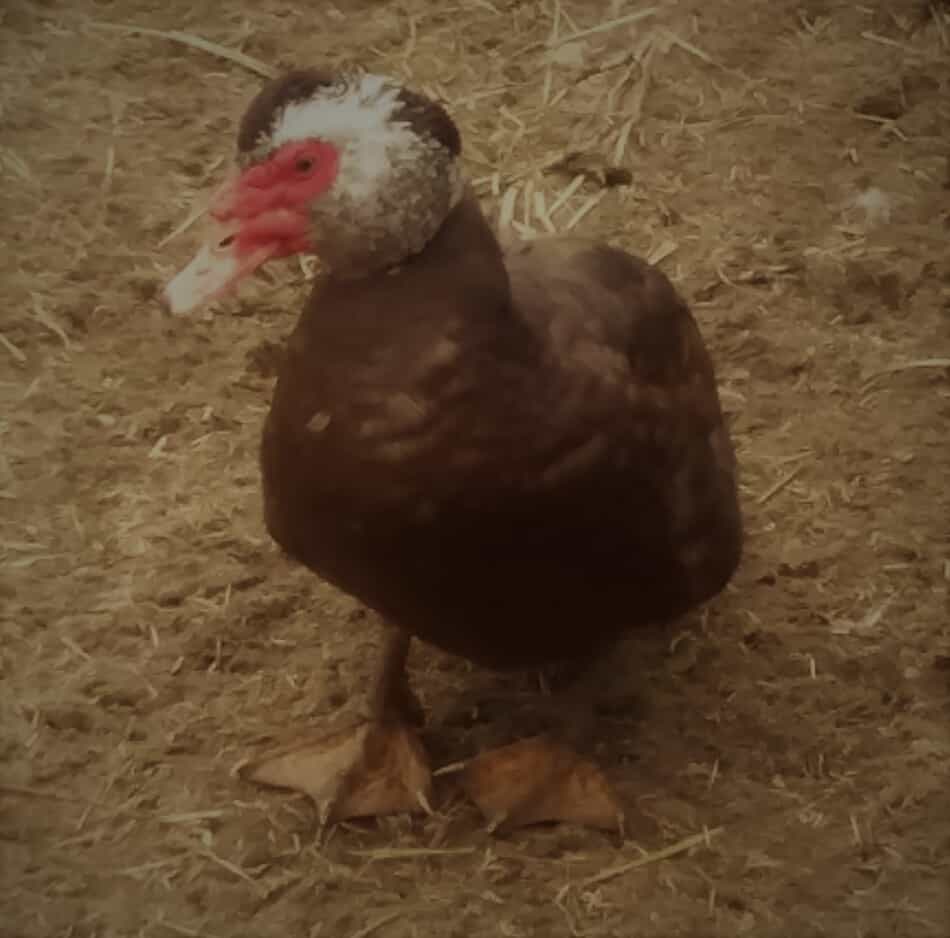
The Muscovy duck is an interesting bird. They are not related to all the other duck species at all.
Muscovy ducks are known for being good brooders of ducklings and the ones we have are dedicated moms.
Here’s an example from our farm: To keep them safe from predators, I put a brood of Muscovy ducklings and their mom in a pasture type shelter.
The mom flew out, but stayed by the edge of the pen for more than a month while the babies grew big enough to be let out.
When I let them out, she treated them like she had kept them with her the whole time!
Muscovy ducks are easily recognized by the red skin bumps on the side of the face and top of the bill. These bumps are called caruncles.
The males will have more caruncles than the females.
A Muscovy has a completely different shaped body than most other ducks, very long and horizontally carried.
The drakes are heavy birds that can raise a little feather mohawk on the top of their heads when they get riled up!
Another very non duck trait of the Muscovy is that they can fly, not well enough to leave the area but definitely well enough to get up into trees to roost.
While they are known for being quiet ducks, they actually “talk” quite a bit.
Since they make a hissing sound rather than quacking, they are quieter to have around than most other ducks.
Aylesbury ducks are famous in England
The Aylesbury duck is the famous pure white meat duck from England, where it is still the preferred duck meat today.
Aylesburys are a very deep bodied, white duck known for meat production.
Young ducks will reach butchering weight of 5 pounds in 7-9 weeks! Drakes weigh 10 pounds and hens weigh 9 pounds.
Aylesburys have a pink and feet, and white skin. The pink colored bill is an easy way to tell an Aylesbury duck from a Pekin duck.
These ducks are calm, not much into foraging (meaning easy to contain) and very tame.
The Aylesbury is one of the most endangered duck breeds in the U.S. today, having less than 500 breeding birds in the country.
There is a critical need for more duck lovers to consider adding Aylesbury ducks to their lives.
Dual Purpose (meat and eggs) Ducks
- Pekin
- Ancona
- Magpie
- Buff
- Cayuga
- Saxony
- Silver Appleyard
Pekin ducks are great layers
The Pekin ducks are wonderful layers and grow to harvesting size quickly, 7-8 weeks, making them the ideal dual purpose duck.
Pekins are a more nervous, talkative duck than most other breeds and are always white.
We have a flock of Pekins for eggs. They are reliable producers of big white eggs. The hens learn to come when feed very quickly.
It might be a surprise to find the Pekin listed as dual purpose, instead of just as a meat duck, as is commonly thought. Give Pekins a try.
You’ll be pleasantly surprised at how well they perform as both a layer and full flavored, meaty carcass they will provide for your table.
Do You Have Enough Room To Raise Ducks? will help you figure up how much space you need to give to your ducks to keep them happy.
Ancona ducks are becoming more popular
The Ancona ducks are an active breed that lays well, producing 120 eggs per year. Ancona eggs are often speckled with blue or black spots.
These birds will weigh 6-6.5 pounds live and 4-6 pounds dressed.
Anconas can come in any white and color spotted combination as long as the areas of color are broken along the head, back, sides and underbelly.
These are a hardy, all purpose duck that grows quickly for a purebred.
Many eaters prefer Ancona meat to the commercial ducks, which are normally Pekin, due to Ancona being more flavorful and less fatty.
Ancona ducks are a rare breed that could use more farms and yards to call home.
Since they are an excellent layer, provide flavorful meat and have a calm disposition the Ancona is a great choice of duck breed for backyard poultry enthusiasts.
Magpies are colorful dual purpose ducks
The Magpie is an attractively marked duck that is mostly white with a dark patch on the back of the head and on the back.
The dark back makes the Magpie look like it is wearing a cape.
Magpies are a very active bird that can gather much of it’s own feed if allowed out to pasture.
These ducks are good layers, producing 220 plus eggs and weighing 4-5 pounds.
While Magpies can not fly they are capable of getting over a low fence or wall. These ducks are very active and can be high strung.
Magpies are another duck breed that could use a second look, since they are a productive duck and need more people to raise them, as they are listed as threatened on The Conservation Priority List for livestock.
Buff ducks are a dual purpose, fawn colored
The Buff is also called the Buff Orpington, which originated in England. It is a calm bird that likes to forage.
As you may have guessed, the Buff duck is fawn brown in color.
Buff Orpington ducks are calm yet still active foragers. The hens will lay 150-200 eggs per year.
These birds gain weight well and has light pin feathers making the carcass easy to pluck.
Buff drakes will weigh 8 pounds and hens will weigh 7 pounds.
As a dressed bird, the carcass has a buttery color and is very meaty for a medium sized duck.
The Buff duck is a rare breed with only 11 farms raising these birds as of the 2015. Only five of these flocks have more than 50 birds each.
There is a need in America for more Buff Orpington duck breeders and fanciers. These useful ducks would do well in your backyard flock.
Cayuga is an American duck breed
The Cayuga is an American breed from Lake Cayuga in New York. Cayugas are a medium sized duck that are blue or most commonly black with a shiny green luster to the feathers.
Cayuga drakes weigh 6.5 pounds and hens weigh 5.5 pounds.
Egg color can range from white to dark green to violet black, normally darker earlier in the laying season.
Cayugas are a calm, friendly duck that is hardy but not well suited to confinement. They have a meaty carcass with dark skin.
These ducks are good foragers and tend to have easy to raise ducklings.
Saxony ducks are large sized and patterned

The Saxony duck was originally developed in Germany in the 1930’s.
Young Saxony ducks grow fast and reach market weight in 10 weeks. Drakes weigh 7.75 pounds and hens weigh 6.5 pounds.
Saxony ducks are a sturdy breed that is also a good layer. They have a tan body and a light colored stripe above the eye.
Drakes have a grey blue head above a white neck ring, with the chest and shoulders rust colored.
We bought a Saxony duck breeding trio, one drake and two hens, a few years ago and they have done well for us.
These are beautiful fawn colored birds that can take care of themselves.
Saxony hens will occasionally try to brood and hatch her own ducklings but this is rarely successful.
Since she is such a large bird, she can be too heavy for the nest.
If you want Saxony ducklings put the eggs under a broody chicken or in an incubator. A broody chicken, choose a larger breed hen, will hatch duck eggs just fine.
Silver Appleyard ducks are colorful and calm
The Silver Appleyard ducks are named after Reginald Appleyard of Bury St. Edmund, England who developed these ducks in the 1940’s.
He wanted a duck that combined size, egg laying ability and meatiness together in one attractive package.
Silver Appleyards are a sturdy, blocky shaped duck that weighs 8-9 pounds.
They have a Rouen type coloring but are much better layers, producing 220 plus white eggs per year.
Silver Appleyard ducks are calm, colorful and great foragers. The dressed bird will weigh 4-6 pounds.
Order your ducklings early
While all of these ducks are available in the U.S., not all are commonly available. Order early in the year.
Any breed listed in the table at the beginning of the article as low availability will need to be ordered early in the season.
Have your order placed around the first part of January (or whenever the new catalog comes out).
These ducklings will have a very limited supply and will sell out quickly.
Do a quick search online. If you are lucky, ducklings can be picked up from a breeder in your area!
To be clear, I am telling you to place your duckling order early.
You can have the ducklings shipped later in the season, if that suits you better. Just have your order placed as early as you can.
Ducklings at chick days in farm stores
We have multiple stores in our area that have “chick days” in the spring that are now also regularly including ducklings.
Good news for you, ducklings are quick growers that will become much more difficult to keep perfect looking in the store as they age.
This is an opportunity for you. I see two week old ducklings marked down to half price or less every year.
Usually these ducklings are Pekins, but you can’t be too picky when you get them half price!
Pekins make great all round ducks. They lay beautiful large eggs and are great for meat, as well.
The down side is you may not get the ducklings. The upside is that if you get them they will be a bargain.
If you want a specific breed, don’t count on getting them at the bargain price in the farm store, you’ll have to order these specifically.
Metzer Farms is a wonderful source of duck information
If you are looking for a great all round site for duck (and goose) information, make sure you check out Metzer Farms. This is a link to their blog page, which has a ton of information and they also sell day old poultry, as well.
I frequently double check my numbers with Metzer Farms, since they are a commercial farm in addition to a hatchery. This means they give you production numbers and information, not just overviews.
Resources: Home Farm Handbook by Peter Ford; The New Duck Handbook by Heintz-Sigurd Raethel; Meyer Hatchery Catalog; and The Livestock Conservancy website
Related Questions
What is a group of ducks called?
A group of domestic ducks is called a flock. Wild ducks are called a flock if they are flying but a raft, team or paddling of ducks if they are on the water.
Are duck eggs good?
We use duck eggs and chicken eggs interchangeably for our family. Duck eggs are richer than chicken eggs making duck eggs popular with bakers. Some people who are allergic to chicken eggs can eat duck eggs.

